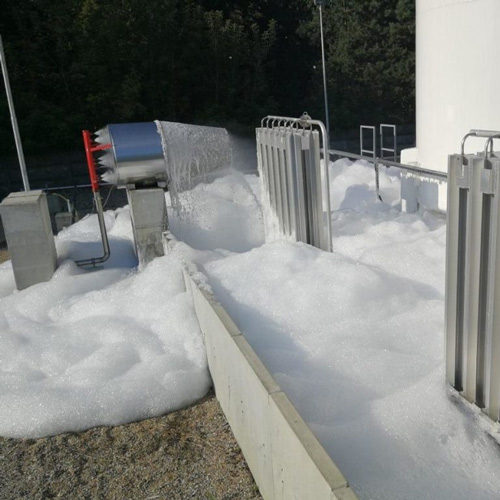Scenario Analysis
Fire foam systems are one of the most effective fire protection systems available on the market. They are particularly effective in fighting fires that can occur in places where flammable liquids and gases are stored. But when exactly should we choose such a system?
In this article, we will examine various scenarios that may indicate the need for a fire protection foam system. Understanding these scenarios will help you make an informed decision that can significantly improve fire safety in your facility.

Scenario 1: Oil and Gas Industry
The oil and gas industry is one of the most obvious places where firefighting foam systems are essential. Due to the high risk of fires and explosions resulting from the presence of flammable liquids and gases, these systems are essential to ensure the safety of workers and the protection of property. In these conditions, firefighting foam is particularly effective because it is able to quickly and effectively cover the fire area, cut off the supply of oxygen and lower the temperature, which helps to quickly extinguish the fire.
Scenario 2: Airports and Seaports
Airports and seaports are other places where firefighting foam systems can be essential. Due to the presence of large amounts of aviation fuel and other flammable substances, these systems can provide effective fire protection. In the event of a fire, quick and effective action is essential, and firefighting foam systems are able to provide a quick and effective response that can significantly reduce damage.
Scenario 3: Warehouses and Distribution Centers
Warehouses and distribution centres, especially those storing flammable materials, can also benefit from the use of firefighting foam systems. In these areas where fires can spread quickly and cause significant damage, these systems can provide effective protection. Firefighting foam is able to quickly cover large areas, which is particularly important in large warehouses where fires can spread quickly.
Scenario 4: Chemical and pharmaceutical plants
Chemical and pharmaceutical facilities often store a wide variety of substances that could be hazardous in the event of a fire. Fire foam systems can provide effective fire protection by preventing the spread of fire and minimizing the risk of damage. Fire foam is particularly effective in these scenarios because it can quickly and effectively cover the fire area, cut off oxygen, and lower the temperature, which helps to quickly extinguish the fire. Additionally, fire foam is safe for most chemicals, meaning it does not cause additional reactions that could make the situation worse.
Scenario 5: Gas Stations
Fuel stations are another place where firefighting foam systems are essential. Due to the presence of flammable liquids such as petrol and diesel, there is a high risk of fires. Firefighting foam systems can provide effective protection by creating a barrier between the fire and the fuel and preventing the fire from spreading further.
Summary
The choice of fire protection foam system depends on many factors, including the type and characteristics of the facility, the type of materials stored, and the specific safety requirements. In any of the above scenarios, fire protection foam systems can provide effective fire protection, minimizing the risk of fires and their consequences. Remember, however, that the selection of the appropriate system should always be preceded by a thorough risk analysis and consultation with fire protection experts. Proper understanding and application of fire protection foam systems can significantly increase fire safety in your facility.
